
Glasnevin is a neighbourhood of Dublin, Ireland, situated on the River Tolka. While primarily residential, Glasnevin is also home to the National Botanic Gardens, Glasnevin Cemetery, the National Meteorological Office, and a range of other state bodies, and Dublin City University has its main campus and other facilities in and near the area. Glasnevin is also a civil parish in the ancient barony of Coolock.
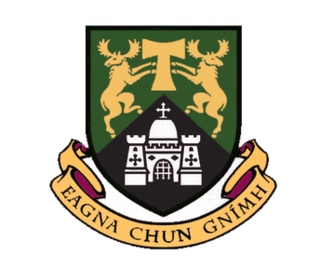
The University of Limerick (UL) is a public research university institution in Limerick, Ireland. Founded in 1972 as the National Institute for Higher Education, Limerick, it became a university in September 1989 in accordance with the University of Limerick Act 1989. It was the first university established since Irish independence in 1922, followed by the establishment of Dublin City University later the same day.

Ballymun is an outer suburb of Dublin, Ireland, at the northern edge of the Northside, the green-field development of which began in the 1960s to accommodate a housing crisis in inner city areas of Dublin. While the newly built housing was state-of-the-art at the time, comprising high-rise tower blocks and flat complexes, residents were moved in years before shops, schools and other infrastructure were fully ready, and the area became well known for both a strong community spirit and considerable social challenges. Ballymun has several sub-districts such as Sillogue, Coultry, Shangan and Poppintree, and is close to both the Republic of Ireland's only IKEA store and to Dublin Airport. The area is the source of one Dublin river, and parts lie in the floodplain of another, and there are a number of parks.

Dublin City University is a university based on the Northside of Dublin, Ireland. Created as the National Institute for Higher Education, Dublin in 1975, it enrolled its first students in 1980, and was elevated to university status in September 1989 by statute.

Drumcondra is a residential area and inner suburb on the Northside of Dublin, Ireland. It is administered by Dublin City Council. The River Tolka and the Royal Canal flow through the area.

Third-level education in the Republic of Ireland includes all education after second-level, encompassing higher education in universities and colleges and further education on Post Leaving Certificate (PLC) and other courses. The degree-awarding institutions which can grant awards at all academic levels are the University of Dublin, National University of Ireland, University of Limerick, Dublin City University, Technological University Dublin, the Royal College of Surgeons in Ireland, Munster Technological University, Technological University of the Shannon: Midlands Midwest, Atlantic Technological University and South East Technological University, as well as St Patrick's College, Maynooth. Quality and Qualifications Ireland, a State agency, can grant awards in other institutions directly, or delegate the authority to do so. The King's Inns of Dublin has a limited role in education specialising in the preparation of candidates for the degree of barrister-at-law to practice as barristers. Medical schools in Ireland also have particular regulation. There were seven establishments of higher education within Ireland ranked among the top 500 universities worldwide by the Times Higher Education Supplement in 2023.

Our Lady of Mercy College, Carysfort was a College of Education in Dublin, Ireland from its foundation in 1877 until its closure in 1988. Educating primary school teachers, and located in a parkland campus in Blackrock, it was a recognised college of the National University of Ireland from April 1975. The site is now the premises of the Michael Smurfit Graduate Business School, part of University College Dublin.
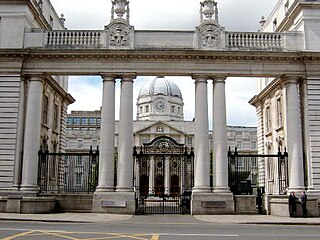
The Royal College of Science for Ireland (RCScI) was an institute for higher education in Dublin which existed from 1867 to 1926, specialising in physical sciences and applied science. It was originally based on St. Stephen's Green, moving in 1911 to a purpose-built "Royal College of Science" building on Merrion Street, now known as Government Buildings. In 1926 it was absorbed into University College Dublin (UCD) as the faculty of Science and Engineering.
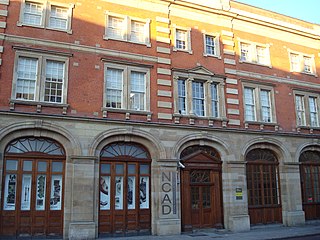
The National College of Art and Design (NCAD) is Ireland's oldest art institution, offering the largest range of art and design degrees at undergraduate and postgraduate level in the country. Originating as a drawing school in 1746, many of the most important Irish artists, designers and art educators have studied or taught in the college. NCAD has always been located in central Dublin, and in 1980 it relocated to the historic Liberties area. The College has around 950 full-time students and a further 600 pursuing part-time courses, and NCAD's students come from more than forty countries. NCAD is a Recognised College of University College Dublin. It is also a member of the European League of Institutes of the Arts.
Hugh Redmond Brady is an Irish academic, the 17th President of Imperial College London, and a professor of medicine. He was the 13th President and Vice-Chancellor of the University of Bristol. He is also President Emeritus of University College, Dublin (UCD), having served as UCD's eighth President from 2004 to 2013.
St Vincent's Secondary School, or St Vincent's CBS, is an independent Catholic Voluntary Secondary School in Glasnevin, Dublin, Ireland. It operates as a registered charity under the trusteeship of the Edmund Rice Schools Trust. As of 2017, St Vincent's CBS secondary school had an enrollment of 375 boys.
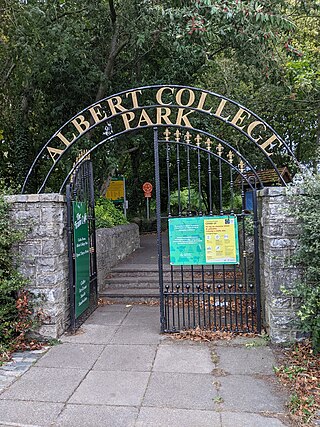
Albert College Park, also known as Hampstead Park, is a public park owned by Dublin City Council and managed by the council's Parks and Landscape Services division. It is located in northern Glasnevin, in the mid-northern suburbs of Dublin.
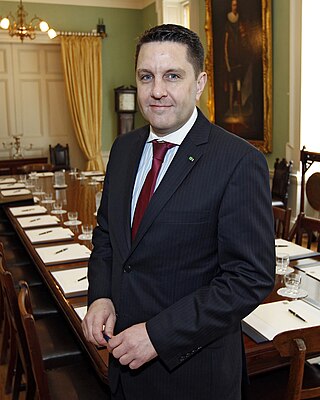
James O'Higgins Norman PC, MStJ, FRSA holds the UNESCO Chair on Tackling Bullying in Schools and Cyberspace at Dublin City University. He is the director of the National Anti-Bullying Research and Resource Centre, and a member of the Government of Ireland Advisory Council on Online Safety.
Lyons Demesne, also Lyons Estate, is a country house and estate in Lyons Hill, County Kildare, Ireland. It is located near Newcastle Demesne and Celbridge, to the northeast of Tipperstown, 24.8 kilometres (15.4 mi) west of the city centre of Dublin. The Georgian house, completed in 1797 under architect Oliver Grace, is set in 600 acres (240 ha). Historically, Lyons was the setting of a notable duel between Daniel O'Connell and John D'Esterre. University College Dublin, Lyons Research Farm consists of a portion of the original Lyons Estate and is used by the School of Agriculture, Food Science and Veterinary Medicine for teaching and research activities.
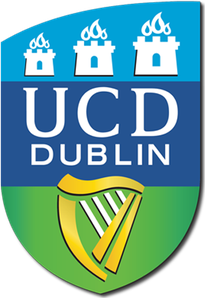
University College Dublin is a public research university in Dublin, Ireland, and a member institution of the National University of Ireland. With 38,417 students, it is Ireland's largest university, and amongst the most prestigious universities in the country. Five Nobel Laureates are among UCD's alumni and current and former staff. Additionally, four Taoisigh and three Irish Presidents have graduated from UCD, along with one President of India.
Wejchert Architects, formerly A&D Wejchert & Partners Architects is a firm of architects based in Dublin, Ireland.
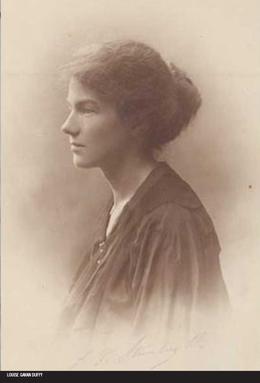
Louise Gavan Duffy was an educator, an Irish language enthusiast and a Gaelic revivalist, setting up the first Gaelscoil in Ireland. She was also a suffragist and Irish nationalist who was present in the General Post Office, the main headquarters during the 1916 Easter Rising.
Caroline Elinor Hussey was an Irish microbiologist and academic. She served as president of the Irish Federation of University Teachers (IFUT) from 1989 to 1992. In 1994 she sat on the Expert Group investigating the circumstances of the 1977 contamination with Hepatitis C of the Blood Transfusion Service Board's Anti-D product. In the same year she was appointed the first female registrar and deputy president of University College Dublin (UCD) and remained in that post until her retirement in 2004. She was Chairperson of the National Council for Curriculum and Assessment from 1995 to 2000.
Alison Jane Hanlon is a veterinary research scientist who advocates for animal welfare, including that of companion animals, horses and farm animals. She is a professor at University College Dublin and has worked on a number of government advisory groups.














